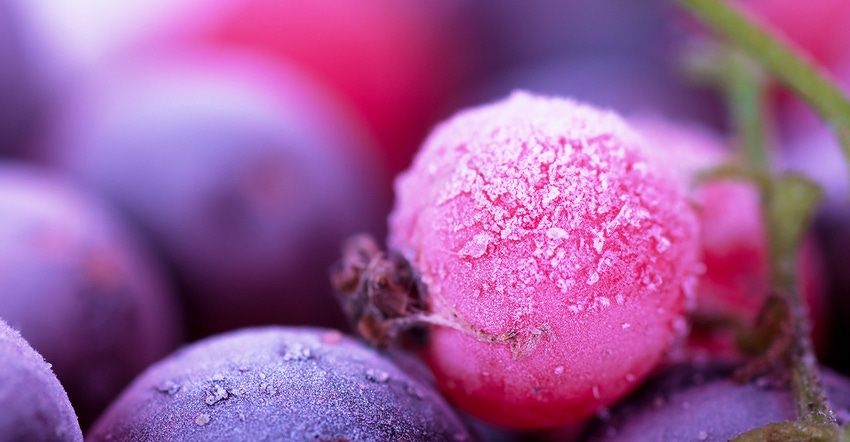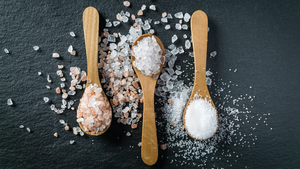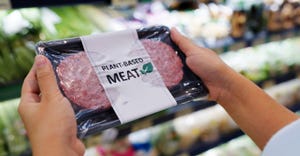Natural products industry experts share tips on formulating with natural flavors and colors.

General Mills Inc. did it. Kraft Food Groups Inc. did it. Papa John’s Pizza, Campbell Soup Co., Taco Bell, Nestlé, Subway, Panera Bread Co., The Hershey Co., Pizza Hut, Kellogg’s Co. and more—they all did it. And maybe it’s time you did it, too.
The “it” these companies did was replace the artificial ingredients in their formulations—including artificial colors and flavors—with naturally sourced alternatives.
In so doing, they paid respect not only to the clean label trend still dominating food and beverage development, but to the will of consumers, whose patience with synthesized flavors and FD&C (food, drugs and cosmetics) dyes continues to wane.
But as any of these brands could attest, making the artificial-to-natural switch was no walk in the park. Even at this late date, swapping synthetic colors and flavors for natural options requires attention, communication and a tolerance for repetition—because you’ll be making many trips back to the drawing board.
But the growing list of companies completing the conversion—to say nothing of emerging brands that go all-natural from the start—proves that today’s clean colors and flavors are approaching performance parity with the “unclean” counterparts they aim to supplant.
Or, as Jason Mittelheuser, technical business development, FONA International Inc., put it, “Virtually anything is possible, but everything has a cost.”
Consumers care
It’s hardly news that brands are mounting clean reformulations. A quick peek at Mintel’s Global New Product Database (GNPD) showed that 43% of all 2018’s food and beverage introductions bore an all-natural claim. And for good reason: Consumers care. A lot. An FMCG Gurus survey of 25,000 consumers in 25 countries conducted in the first quarter of 2019 found 73% of respondents hold “100% natural” to be an important quality in food and drink. Sixty-one percent considered such products “healthy,” and 41% viewed them as better for the environment. On the flipside, 59% expressed concern about ingredients they perceive as “chemical.”
These sentiments reflect a broader lean toward health, wellness and mindful eating that encompasses everything from “natural” and “clean” ingredients to organic and non-GMO agriculture, “free-from” diets, sustainability and transparency.
Consider: SPINS reported in its 2019 State of the Natural Industry Report that organic products accounted for 3% of food and beverage sales—outpacing total market growth—and vegan products are growing at a rate of 10%. Meanwhile, a 2018 report from Label Insight and the Food Marketing Institute (FMI) found consumers are craving more transparency in food and beverage ingredients and 75% said they would switch to a brand that provides more in-depth product information beyond what’s provided on the ingredient deck.
As with everything else, we can blame Millennials for putting these issues on the agenda. But even more than Millennials, Generation Z comprises “clean eaters with strong interest in transparency, product sourcing and social responsibility,” said Anu Fisher, marketing analyst, FlavorChem. “They seek foods and beverages that are gluten-free, non-GMO, free of artificial flavors and colors, and contain fewer preservatives.” So, get ready: “Natural” isn’t going away. In fact, it’s gaining broader traction. “Demand for natural ingredients is closer to universal now than in the past,” observed Philip Caputo, marketing and consumer insights manager, Virginia Dare. “Now that the clean label movement has become established, formulators are going natural in categories like snacks and frozen entrées that, 10 years ago, would’ve likely had limited all-natural or clean label options.”
Kid-friendly products still receive scrutiny. “Parents watch their children’s diets very closely,” noted Roger Lane, marketing manager, Sensient Flavors. “So, there’s a specific push to reformulate kid-centric categories such as breakfast cereals, sweet and salty snacks and prepared meals like macaroni and cheese.”
Even supplements are hopping on the wagon, said Paulette Lanzoff, technical director, Synergy Flavors. They may be somewhat late to the game, but “in the past 10 years, there’s been an increasing emphasis on natural for this category, as well.”
Taking a contrarian perspective, Connie Sandusky, global marketing director, DDW, The Color House, wagers that demand will have to strengthen before supplement brands fully embrace natural formulation. “Margins are tight, and competition is fierce in this segment,” she reasoned, “so products can’t support the formulation cost of natural colors.”
Either way, Daniel Castillo, global accounts director at DDW, is bullish on the international prospects for natural ingredients, which “are no longer a Western luxury,” he said. “Large companies are offering their premium brands all over the world, and globalization opens big opportunities for natural color across a wide variety of segments—not just food and beverage, but also snacks, pet foods and nutraceuticals.”
What’s in a name?
Of course, what qualifies as “natural” isn’t a global matter but depends on how local authorities regulate the term. In the U.S., FDA has left considerable room for interpretation.
“‘Natural’ is inherently controversial,” said Deirdre Burgess, communications manager at FONA. But flavors offer an oasis of clarity as “one of the only areas where FDA regulates the term.”
That regulation resides in 21 Code of Federal Regulations (CFR) 501.22 and defines a natural flavor as—deep breath—“the essential oil, oleoresin, essence or extractive, protein hydrolysate, distillate, or any product of roasting, heating or enzymolysis, which contains the flavoring constituents derived from a spice, fruit or fruit juice, vegetable or vegetable juice, edible yeast, herb, bark, bud, root, leaf or similar plant material, meat, seafood, poultry, eggs, dairy products or fermentation products thereof, whose significant function in food is flavoring rather than nutritional.”
Flavors comprise both a taste component from, say, carbohydrates and acids, and aromas “created by micro quantities of volatile molecules that form in food during ripening, post-harvest changes and processing,” Lanzoff explained. So, in an apple, sugars and acids contribute sweet and sour tastes, while trace amounts of native volatiles add a characteristic “apple” overlay.
“A natural flavor that tastes like apple,” she continued, “will have some components from the apple—juice, essence, pulp—plus other components present in apples but derived from other sources.” Ethyl acetate is one, formed when the fermentation products ethyl alcohol and acetic acid combine. Cis-3-hexenol, also known as leaf alcohol, is another. “It imparts a characteristic green note to apple,” Lanzoff said, yet can be isolated from mint oil. So even a “natural” apple flavor may not be entirely derived from apples.
As for “natural” colors, the CFR classifies color additives into one of two groups: those subject to batch certification—so-called certified colors, which bear FD&C numbers—and colors exempt from certification.
It’s the latter category that are typically sourced from plants, animals or minerals and, thus, typically deemed “natural” by consumers and industry. “However, because FDA considers all color additives used to impart color to food to be artificial colorants, even these exempt colors cannot be labeled as natural,” noted Sue Ann McAvoy, global regulatory specialist, Sensient Food Colors.
In other words, if a brand adds a colorant—even a naturally derived one—to a formulation where it wouldn’t have occurred naturally, it can’t declare it natural on the label.
Balancing acts
As if the regulatory gymnastics weren’t enough, the task of reformulating products to contain natural colors and flavors—however defined—remains a test of patience and fortitude.
“In most cases, the taste, texture and aroma of artificial ingredients will be drastically different from those of their natural counterparts,” Caputo said.
The catch: Product developers “want no discernable difference in the flavor or color of the reformulated product,” Lane said. In fact, “many times, they’re looking to swap out both the artificial flavor and color at the same time. This can be a very delicate balancing act and is very application-specific.”
Yet, as Christopher Warsow, director of culinary applications and corporate executive chef, Bell Flavors & Fragrances, pointed out, “The pallet of ingredients dwindles as label requirements go up. It’s a savvy formulator who can work with that limited pallet and still hit cost and flavor targets.” All of which helps explain why synthetic flavors and colors became so popular in the first place.
Synthetic strengths
“Synthetic colors are chemically produced, and were designed for shade and stability,” noted Lori Napier, director of product development and applications, natural colors division, Chr. Hansen Inc. “Natural pigments weren’t ‘designed’ for food and beverage use by the native plants. The molecules are naturally susceptible to various conditions [such as heat, pH and light] found in food and beverage formulas and processing.”
Anthocyanins, for example, change hue—what’s known as a bathochromatic shift—when the surrounding pH changes. And while turmeric can produce attractive, bright-yellow shades across applications, it fades upon light exposure.
Because formulation constraints typically limit the inclusion of artificial preservatives, natural flavors’ shelf lives are “less robust, likely on the order of six months, or half that of synthetics,” said Joan Harvey, a researcher at Bell.
Venture into organics, and the constraints multiply further. “Restrictions on solvents and stabilizing components like antioxidants all affect stability,” said Terry Miesle, a senior flavorist at FONA. “Organic sometimes means you just can’t use all the carriers you might otherwise.”
Sticker shock
Not only do natural colors and flavors have a finicky reputation; they’ve also historically cost more despite it. Chalk it up to sourcing and extraction costs, which can be a barrier to naturals’ use in low-cost items. As Miesle put it, “When you have a lower price point on the shelf and want to reformulate to natural, it can cause sticker shock.”
By contrast, synthetics are cheaper to produce, and deliver more color and flavor—effectively doubling their affordability. “Think about ethyl vanillin versus vanillin,” Mittelheuser explained. “It’s not just that ethyl vanillin is an artificial form; it’s more potent, too, so you can use less of it in your flavor, which means a lower use level. That means lower cost in use.”
Know the base
Formulators also need be aware of processing and matrix considerations. “Foods with long or harsh cooking processes are the most difficult,” Warsow said. Meat jerkies, retorted products and fried foods are all cases “where flavors get lost during cooking,” he added. Light aromas like cilantro and fresh chile peppers also suffer.
Even baking can do a number on natural colors and flavors. “There’s not much room to deviate from the formulation’s specs, and the standards for consistency are high,” Caputo said. “A slight change in pH or water content can throw off an entire run of breads or snack cakes.”
And experts advise formulators to know their base before formulating with naturals. “Sometimes, a flavor designed for one product will fail to deliver the expected results in another,” Miesle cautioned.
For example, starch’s structure tends to bind delicate flavors, hampering their volatilization during consumption. “Fat can also bind flavors and prevent them from being sensed,” Warsow added. For that reason, baked crackers present a trifecta of threats: “They’re baked at high temperatures for an extended time and contain a great deal of starch.”
Dried seasonings and snack coatings challenge natural colors because their greater surface area increases the likelihood of oxidation. “Stability improvements are necessary to achieve a desired shelf life,” said Ashley Huff, associate scientist, Kalsec. “There are also hues such as red that are difficult to achieve in dry form or in coatings for applications like snacks because of factors like heat processing, application method and fat content.”
Exceeding expectations
It’s a lot for developers to heap onto their plates, but the caveats wouldn’t be so concerning if consumers cut natural products some slack. But no such luck.
To wit, consumers express concern when a food or drink looks less vibrant because of its natural colors and many take kindly to paying more for natural. “Irrespective of any health concerns consumers may have, sensory appeal and affordability remain key issues when buying food and drink,” said Mike Hughes, head of research and insight at FMCG Gurus.
Fortunately, it’s by no means inevitable that naturally colored and flavored products will be inferior to those made with synthetics. In fact, Meghan Fox, marketing specialist at Sensient Food Colors, likened such comparisons to “defamation.”
“Natural colors give developers the ability to maximize performance and shade selection,” she said. “If your crayon box is more robust and fuller, you have greater shade options and more effective ways of optimizing natural color performance.”
Huff agreed. Earlier generations of colors may have been lacking, but the latest innovations have yielded “naturally based colors standardized to higher pigment content and have increased stability without adding flavor,” she said.
Joshua Jackson, application technologist at Sensient Flavors, said the inferiority of natural flavors is also a common misconception. “They’re typically made with the same combination of aroma compounds,” he noted, and “both natural and artificial aroma compounds provide the same flavor impacts and profiles when used in formulation.” Those impacts and profiles are improving by the season as suppliers invest in new flavor and color technologies and sourcing strategies.
From source to solution
“Past challenges in developing natural flavors have diminished thanks to the ever-increasing availability of natural materials for use in flavor creation,” noted Michael Crane, senior flavor chemist, Comax Flavors. “The continually increasing availability of novel flavor ingredients will allow flavor chemists to develop more complex, ‘true-to-nature’ profiles.”
By leveraging fermentation, better extraction techniques, reaction flavor development and new methods of harvesting flavor components from plant sources, “flavor suppliers are bringing new ingredients to market every year,” added Michael Levine, director, strategy and product management, flavors, Glanbia Nutritionals. “As techniques improve, costs generally come down, too.”
Looking at colors, Andy Dratt, chief commercial officer, Imbibe, reflected on how the move away from synthetics has changed the nature of the industry itself. “Because synthetics were products of a chemical process, the trick was building facilities to make them,” he said. “When you go natural, you’re bringing in an agricultural element that you didn’t have before. You don’t just have to know how to process these colors; certain pigments may mean breeding certain crops in different ways. And that’s a very different business.”
Dave Gebhardt, technical director at Sensient Food Colors, pointed to the success of his company’s seed-to-shelf agronomy program in naturally breeding botanical seeds for proprietary colors with higher pigment concentrations. “This enables better cost in use for developers and makes natural colors more approachable,” he said.
Carolina Innovative Food Ingredients (CIFI) has long tapped sweet potatoes for their coloring capacity. The company’s nutrient-dense cloudy sweet potato juice provides a natural orange/amber color and mild sweetness to everything from fried snacks to baked goods. “You could use it in a sweet-potato hamburger bun, naturally adding color, flavor and sweetness to make it stand out on the shelf,” said Paul Verderber, senior vice president of sales, CIFI. Being from locally grown, upcycled sweet potatoes, the colorant even has a “compelling waste and sustainability story,” he added.
Gebhardt noted that heat- and pH-stable natural reds have been difficult to achieve naturally. Beet looked like a viable source but browns at high temperatures. Thus, Sensient introduced its SupraRed technology to create a highly concentrated, heat-stable beet-based colorant that “achieves bright, vivid red shades that stand up to baking and extrusion,” he said, even at neutral pH.
Maria Jose Alarcon, product experience marketing manager for colors, ADM, said ADM offers a complete range of acid- and heat-stable colors including a patented blue derived from fruit juices that’s stable at every pH. “That means we can apply it to almost every type of food,” she noted. “Plus, our color team can combine this unique blue with other colors to make purple, green and brown color blends, allowing a complete range of colors.”
Sensient Food Colors fills a gap in “denim blues” with its catalogue of spirulinas, pH-modified anthocyanins and blue vegetable juices that open the door to rich purples while also helping manufacturers address the need in pet foods for heat-stable botanically based greens.
“With recent regulatory and Association of American Feed Control Officials recommendations steering away from some green and blue sources like chlorophyll and huito, new and current pet products may need new green colors made from alternative blue sources,” Fox explained. Blends of their natural blue vegetable juices and yellow options like beta carotene and turmeric “reach beautiful green shades that withstand the heat of extrusion.”
Special delivery
Beyond colors and flavors, suppliers are creating delivery forms that also improve performance.
“We’ve been doing quite a bit of work on making our delivery systems much more efficient for flavors,” Warsow said. “This involves protecting them from loss during processing and storage. We make the flavor ‘come to life’ when called upon during cooking or consumption, lessening the amount of flavor needed in the product and giving consumers the experience, they’re looking for.”
Antioxidants and emulsion advances have let color developers make great strides in delivering high-performance yellow, orange and red hues. “I’m looking forward to new products with functionalities that provide difficult hues for certain applications,” Huff said. “By creating new delivery systems that force pigments to interact with light in different ways, we can achieve hues that so far haven’t been attainable with certain pigments.”
And by creating plating-grade natural colors that produce bright, stable hues in dry blends and fat- and oil-based systems alike, Sensient Food Colors’ Microfine technology has widened the range of botanical colorants that can function in fat-based systems. “Microfines perform similarly to synthetic lakes and will homogenously color the dry or fat-based system without any speckling,” Gebhardt said.
Gaps remain
Despite these quantum leaps, natural colors and flavors still face hurdles, not least of which is the fact that some artificial flavors contain aroma compounds that are unavailable in natural form.
“These chemicals may not be found in nature, may have unstable natural forms or may be too expensive to isolate from a natural source,” Jackson explained. Sweet browns, as well as nut pyrazines and indulgent furanones, are common examples.
“Combinations of natural aroma compounds can often recreate the flavor profile of materials that are only artificial,” Jackson noted, “but a substitution may result in flavor changes.” Consider the conversion of artificial vanilla to natural: “Ethyl vanillin isn’t found in nature, so we typically use a higher amount of vanillin, but it has a solubility limit in a flavor, thus altering the profile slightly and making it less than a direct match.”
Facing up to functional
Another stumbling block for natural colors and flavors is functional formulation. “According to Innova Market Insights, the functional food and beverage category is expected to reach $279 billion by 2021,” with fiber, protein, probiotics and vitamin fortification all popular, noted Fisher.
But such ingredients—proteins especially—not only often taste unappealing but can interact with natural colors and flavors in ways that defeat their stated purpose.
As Mittelheuser poined out, proteins “may wrap or engulf certain components of a flavor and mute them or make them less intense.” And don’t forget the chalky textures and astringent off-notes they themselves contribute.
The main challenge with coloring protein products often boils down to achieving the same look and taste of animal protein, but in a plant base. This puts the focus on plant-based sources of meaty reds, whites for imitation seafood and browns resembling faux poultry and deli cuts, Fox said. Sensient’s seen demand for its red-beet portfolio, as well is its natural brown Sienna fruit juice and natural titanium dioxide alternatives rise as a result.
“We developed several natural red blends that turn brown when cooked, imitating raw beef,” noted Stephen J. Lauro, general manager, colorMaker Inc. However, “each plant-based protein company has a slightly different visual target for its imitation hamburger patty, taco meat, hotdog, etc. And each plant-based protein company has different criteria for its finished product, from non-GMO to kosher, halal and organic,” he said.
Other challenges to coloring and flavoring naturally good-for-you products involve contending with salt and sugar reduction, the off tastes common to high-intensity sweeteners and more. The introduction of CBD to some formulations has developers scrambling for color and flavor solutions that play well with this complicated ingredient.
“CBD oil can be challenging to color because only a handful of natural emulsifiers effectively disperse natural colors throughout the oil without streaking,” Lauro explained.
Supply strains
Lauro also shined a light on what he thinks will be a major theme for natural colors and flavors going forward: capacity. “Can the natural industry meet the growing demand for natural colors and flavors?” he asked.
It’s no idle inquiry. “Sourcing, sustainability and cost concerns will continue to challenge flavor and product developers,” Crane said. “Economic, political, environmental and other global issues may add to the challenges of maintaining cost-effective natural flavor profiles for use in food and beverage products.”
It hardly helps that sourcing natural colors and flavors isn’t always as green as consumers or industry would like. “It may seem counterintuitive, but sustainability is one area where synthetic components often have an advantage,” Miesle noted. “They’re often more sustainable than natural options.”
Moreover, Mother Nature is fickle. “We can count on her to interrupt supply occasionally,” he continued. “Whether a hurricane knocks down citrus groves, a typhoon swamps onion production or drought interrupts agriculture, there will be surprises along the way.”
Consider the current crisis in vanilla. “As many large-scale producers try to remove artificial ingredients from their product labels, demand for real vanilla outstrips supply,” Caputo noted. And though global volatility in the commodity appears to be stabilizing—producing a slight price decline—the market remains fragile.
Fisher pointed to FlavorChem’s natural vanilla extract enhancers as temporary stopgaps that feature real vanilla and can simulate, replace or enhance the performance of pure vanilla extract. “They offer an authentic taste, supply stability and consistent quality,” she said.
Difficult conversations
Next on product developers’ to-do list: coloring and flavoring products without … colors or flavors. “The newest hurdle is how to use flavor ingredients and not list the word ‘flavor’ on the label,” Harvey said. Why? For a small subset of consumers, even natural flavors are suspect. “This will provide more challenges for developers,” she noted.
Dratt encouraged product developers to get frank with flavor and color suppliers from the start. “We often have difficult conversations with our customers early in the relationship,” he said. “Because sometimes, there’s space between what you want and what you can get with natural ingredients. So, let’s talk about what we can do to hit that trend you’ve identified, even if you can’t go as far as you thought you could.” Even then, “maybe that’s okay,” he said.
Kimberly J. Decker is a Bay Area food writer that has worked in product development for the frozen sector and written about food, nutrition and the culinary arts. Reach her at [email protected].
About the Author(s)
You May Also Like






